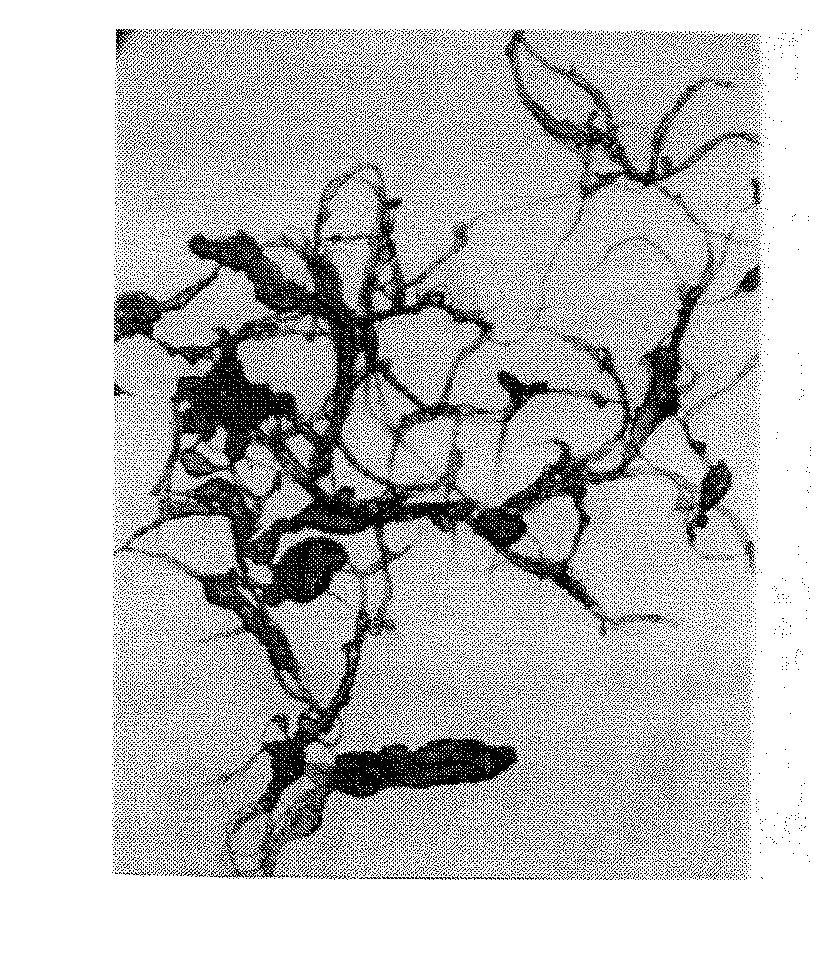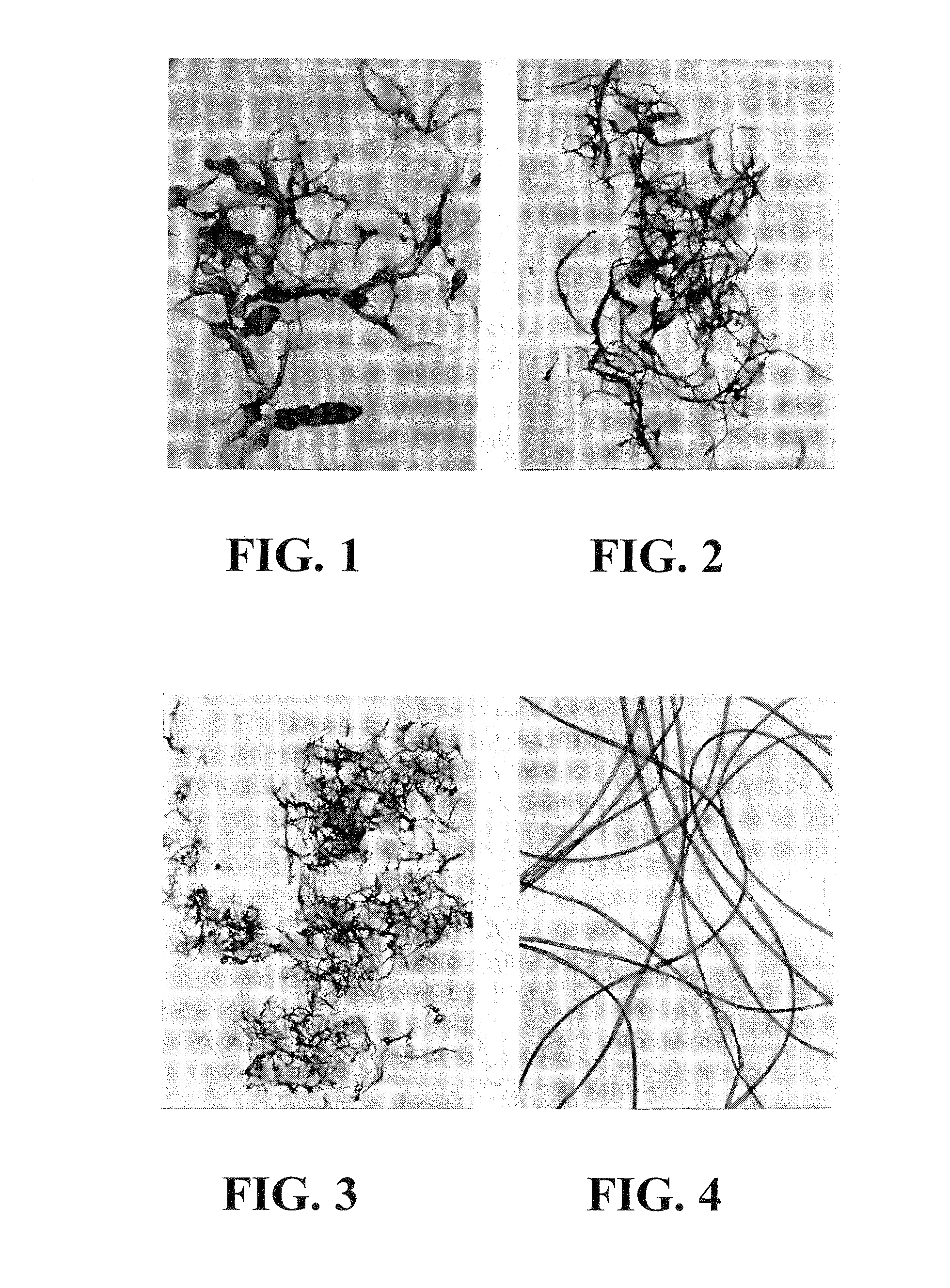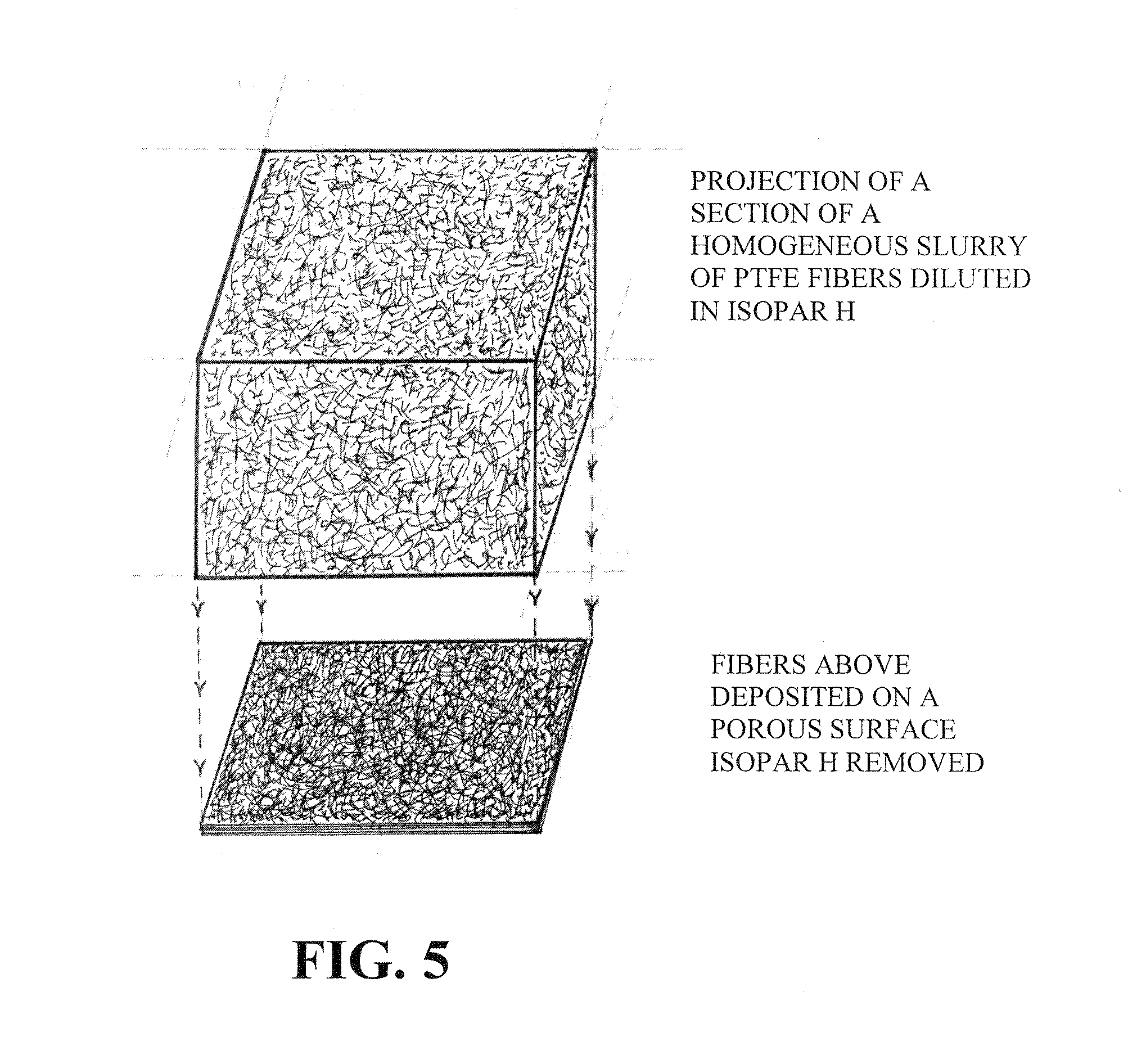Isotropic NANO crystallites of polytetrafluoroethylene (PTFE) resin and products thereof that are biaxially planar oriented and form stable
a technology of polytetrafluoroethylene and nano crystallites, which is applied in the direction of layered products, electrical generators, transportation and packaging, etc., can solve the problems of poor properties, severe limitation of resin capability, and products produced with pores, and achieves less stringentness, less demanding, and easy manufacturing
- Summary
- Abstract
- Description
- Claims
- Application Information
AI Technical Summary
Benefits of technology
Problems solved by technology
Method used
Image
Examples
example 1
[0061]This example describes changing the structure of isotropic stand-alone colloidal dispersion particles of PTFE resin into isotropic staple length micro-fibers and continuous length fiber product by extracting and rearranging the nano size crystalline content within each dispersion particle; isotropic fiber structures are a new composition of matter for polytetrafluoroethylene (PTFE) resin. Twenty (20) parts of ISOPAR H hydrocarbon oil at 125 degrees centigrade is added to one (1) part of “TEFLON” 6 (DuPont) coagulated dispersion resin (having an average particle size of 500 microns, containing dispersion resin particles 0.05 to 5.0 microns size) said mixture is stirred at a tip rotor speed of 2000 feet / minute, within 3 to 5 minutes a thick slurry of isotropic micro-fibers form that are one quarter inch (¼) to three eights inch (%) long with an average diameter ranging from five (5) to thirty (30) microns long. The thick slurry is diluted further with thirty-five (35) part ambie...
example 2
[0062]This example employs PTFE dispersion particles from an aqueous dispersion rather than coagulated dispersion resin. Slurrying an aqueous dispersion with a water miscible liquid such as an alcohol and removing the water by filtration or by admixing a water-immiscible liquid with aqueous dispersion such as carbon tetrachloride which wets PTFE resin, adding an electrolyte such as hydrochloric acid and stirring until the PTFE resin is transferred into the non-aqueous liquid, decanting the aqueous phase; then filtering the solid PTFE from the carbon tetrachloride to leave PTFE resin.
example 3
[0063]This example describes producing continuous lengths of micro-fiber interlocked sheet product following the method of Example 1 employing coagulated dispersion resin as the PTFE resin feed or alternatively the PTFE dispersion particle feed of Example 2. Once the isotropic micro-fibers are formed according to Example 1 only the slurry is deposited onto a continuous moving porous surface provided with a vacuum similar to those used in papermaking to remove ISOPAR H, then compressed between large diameter (12 to 24 inches in diameter) rolls at low pressure, to consolidate only and not increase “fiber mat” sheet lengths; the consolidated sheet is then dried by infrared heat not to exceed 300 degrees Centigrade followed by sintering by infrared not to exceed 400 degrees Centigrade. The sintered and dried sheet is void free and multi-directional planar oriented isotropic and form stable with a tensile strength of at least four thousand five hundred (4,500) psi and an elongation of at...
PUM
| Property | Measurement | Unit |
|---|---|---|
| Temperature | aaaaa | aaaaa |
| Temperature | aaaaa | aaaaa |
| Temperature | aaaaa | aaaaa |
Abstract
Description
Claims
Application Information
 Login to View More
Login to View More - R&D
- Intellectual Property
- Life Sciences
- Materials
- Tech Scout
- Unparalleled Data Quality
- Higher Quality Content
- 60% Fewer Hallucinations
Browse by: Latest US Patents, China's latest patents, Technical Efficacy Thesaurus, Application Domain, Technology Topic, Popular Technical Reports.
© 2025 PatSnap. All rights reserved.Legal|Privacy policy|Modern Slavery Act Transparency Statement|Sitemap|About US| Contact US: help@patsnap.com



